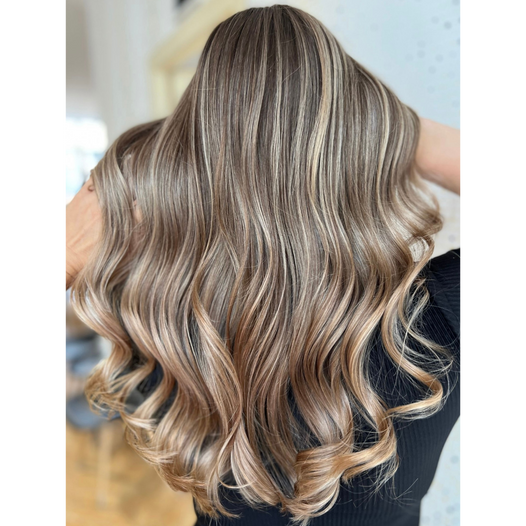
A Guide for Type 3 and Type 4 Hair: Understanding Hair Texture, Curl Pattern, Porosity, Density, Elasticity, and Shrinkage

Hair is a beautiful and diverse feature that varies greatly from person to person. Type 3 and Type 4 hair, often categorised as curly, coily, or kinky, have unique characteristics that require specific care and styling techniques. By understanding these aspects, you'll be better equipped to care for and embrace the beauty of your natural curls or coils.
Take our Hair Type Quiz after reading this article to determine your hair type (3 or 4) and subdivision (A, B, or C). You will also receive a care routine and product recommendations to guide you in your healthy hair journey.
Hair Texture:
Hair texture refers to the diameter or thickness of an individual strand of hair. It is categorized into three main types: fine, medium, or coarse. Type 3 and Type 4 hair typically have a medium to coarse texture, which influences how the hair feels and behaves.
Curl Pattern:
The curl pattern describes the natural shape and pattern of the hair strand. Type 3 hair falls into the curly category, while Type 4 hair is coily or kinky. Curl patterns within these types can range from loose curls (3A) to tight coils (4C).
Porosity:
Porosity refers to the hair's ability to absorb and retain moisture. Understanding your hair's porosity is crucial for developing an effective hair care routine. Type 3 and Type 4 hair often have higher porosity levels, making them more prone to moisture loss. High porosity hair absorbs moisture quickly but struggles to retain it, while low porosity hair resists moisture absorption.
Density:
Hair density refers to the number of hair strands per square inch on the scalp. It determines how thick or thin your hair appears. Type 3 and Type 4 hair can vary widely in density, with some individuals having high density (thick hair) and others having low density (thin hair).
Elasticity:
Elasticity refers to the hair's ability to stretch and return to its natural shape without breaking. Healthy hair possesses good elasticity, allowing it to withstand manipulation without significant damage. Hair elasticity is influenced by factors such as moisture levels, protein content, and overall hair health. Type 3 and Type 4 hair generally have good elasticity. However, excessive heat styling, chemical treatments, or lack of proper moisture can affect elasticity, leading to breakage and damage.
Shrinkage:
Shrinkage is a characteristic of curly, coily, and kinky hair types. It refers to the hair's tendency to appear shorter than its actual length when dry. Natural curl pattern causes the hair strands to contract or "shrink" in length. Type 3 and Type 4 hair often experience significant shrinkage due to the tightness of the curl or coil pattern. Embracing shrinkage is an integral part of embracing and appreciating natural hair.
Understanding these characteristics, will help you develop a personalised hair care routine that caters to the specific needs of your natural curls or coils. Take our Hair Type Quiz now to determine your hair type (3 or 4) and subdivision (A, B, or C). At the end, you will receive a care routine and product recommendations to enhance your hair’s natural beauty.









Leave a comment